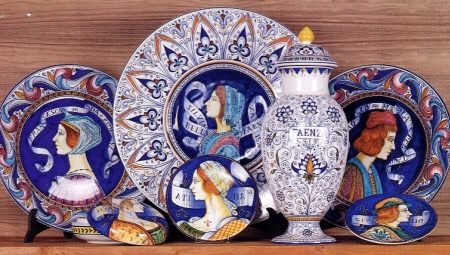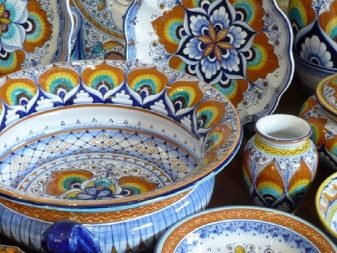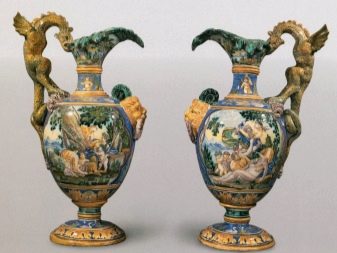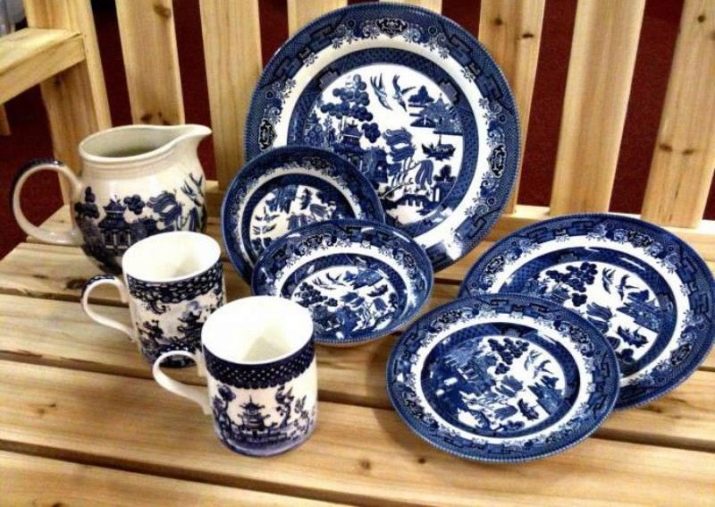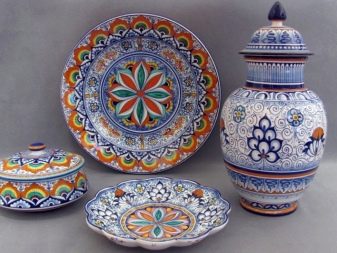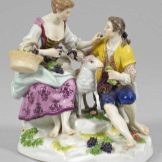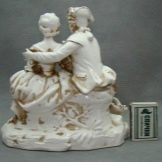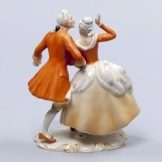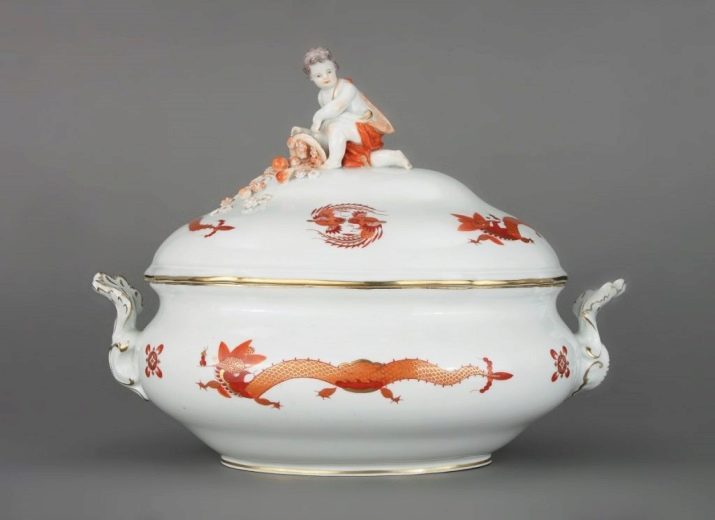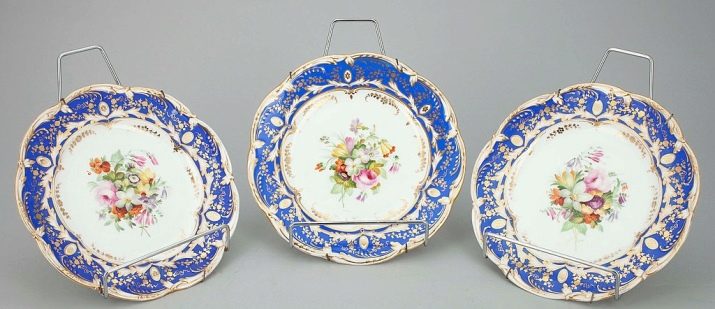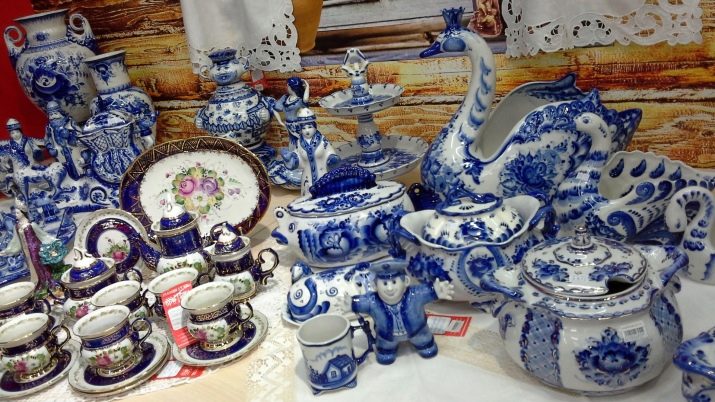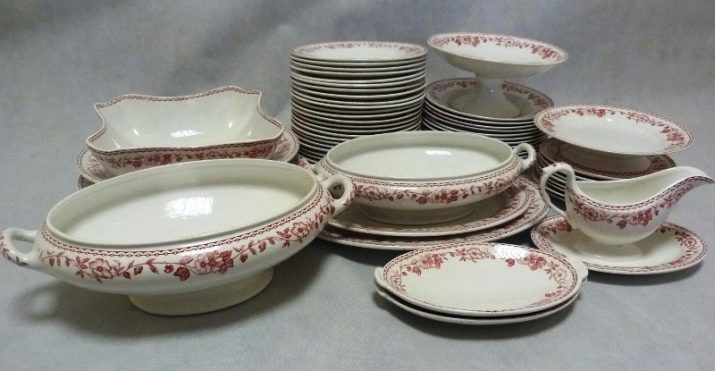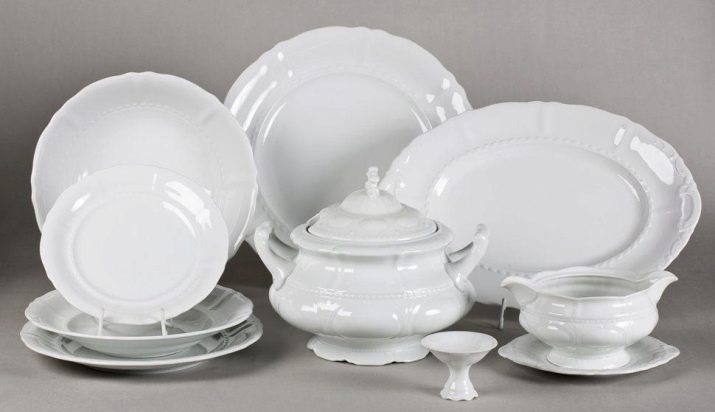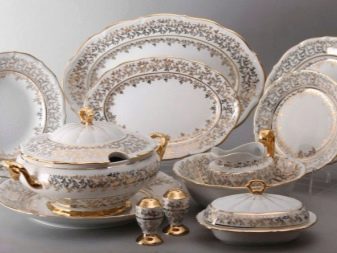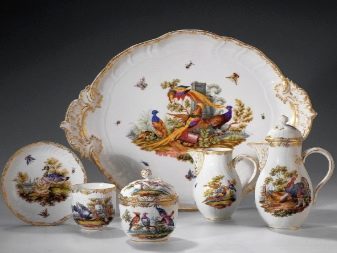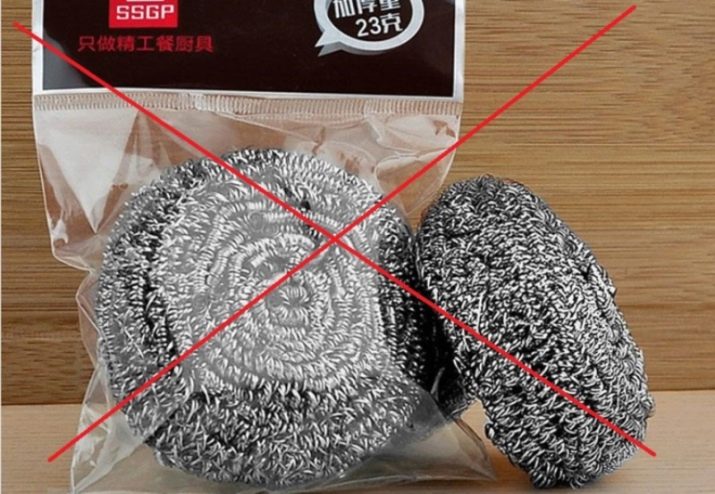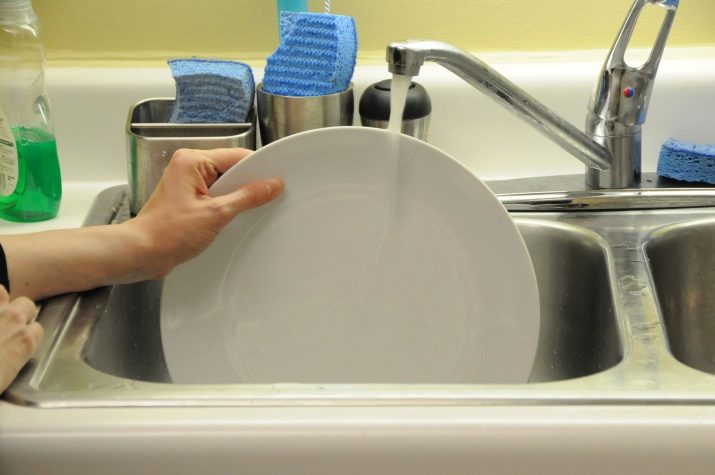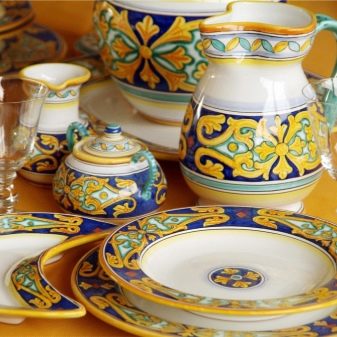Cookware from faience for many centuries was considered one of the most comfortable and presentable. True, many consumers often confuse earthenware dishes with porcelain, but they are completely different things, despite the fact that they look about the same and are made of ceramics. Earthenware products were made in the territory of Ancient Egypt and Mesopotamia, although their appearance at that time was far from perfect.
Only a few centuries later, the first faience ware appeared in the Italian city of Faenza. The masters of that time for a long time tried to achieve the grace of Chinese porcelain, as a result of which they achieved perfection in the production of faience.
For a long time, earthenware was called majolica, produced in all of Europe. This material got to the territory of Russia only in the 18th century. Ukrainian made high skill in its production masters from Tripoli. Faience from merchant factory A. Grebenshchikov from Moscow enjoyed special popularity: craftsmen painted with colored enamel paint. Masterpieces from these masters are still appreciated in the world of connoisseurs of beauty.
What it is?
Faience - a material that is a variety of ceramics, resulting in the process of sintering clay with certain mineral additives. During the Middle Ages, earthenware was made from quartz pebbles, limestone, soda and copper ore. Today, clay (kaolin), spar and quartz are used in its production. Earthenware dishes are very similar to porcelain, but unlike it does not shine through the light - its color is not perfectly white.
The faience is completely waterproof, and when tapping on it you hear a muffled sound. This is the result of firing at a not very high temperature during its production.
The main element of the faience components is White clay is a material that makes dishes quite fragile and not quite resistant to high temperatures. The structure of products is porous, the walls are thick. The peculiarity of faience products lies in the fact that they periodically absorb the smells of products. Anyway, but products from this material are very popular in the territory of modern hostesses. Bright, non-standard mugs and plates can be a highlight in any kitchen.
Advantages and disadvantages
The main advantages of dishes from this interesting material are: the excellent design of utensils due to the fact that it is possible to cover the surface with colored glaze, as well as a fairly low price. In addition, such advantages are also important:
- does not cause allergies;
- compared to simple earthenware, faience is more durable;
- the dishes retain their heat perfectly, which is very convenient when cooking dishes;
- very convenient and easy to use, easy to wash off any grease and resistant to any detergent;
- you can not be afraid to keep, for example, a plate in one another, worrying that they will crack;
- A set of such dishes can be a wonderful gift for any connoisseur of beauty.
You can add and the fact that from the earthenware is made not only dishes, but also other products, such as figurines.
The disadvantages of such dishes include:
- insufficient whiteness;
- lack of elegance (when compared with luxury porcelain tableware);
- instability to sudden changes in temperature;
- absorption of unpleasant odors - this dish does not need to be covered for a long time.
Kinds
Today, manufacturers offer 4 types of faience products. We list them.
- Lime. In this case, in addition to clay and quartz, chalk and dolomite containing calcium and magnesia are added to the composition of the material. This type of ceramic is subjected to thermal firing at a not very high temperature.
- Soft. In the manufacture of this type of faience, in addition to the usual clay and traditional quartz additives, manufacturers add fluxes - substances that can contribute to a certain roasting of products and in its process go into the molten state, forming a fusible compound.
- Feldspar. The name of such material speaks for itself: a certain amount of feldspar, a mineral from the class of silicates, is added to the calcined mass.
- Solid. One of the most dense materials, calcined at high temperatures. Therefore, dishes from this type of faience most durable and dense.
All dishes made from such an unusual material are in demand not only in private households, but have long gained popularity in various types of catering: in restaurants and cafes, canteens and pizzerias, in fast foods.
The most commonly used dense white earthenware dishes.
With regards to the range presented in today's market of dishes, the faience industry has something to boast:
- deep, medium and sandwich plates;
- saucepans of various forms;
- dishes for fish and salad;
- tureens for serving different types of soups;
- cups for broths with lids;
- cups for coffee and coffee houses;
- cups for tea and teapots;
- Bowls of various sizes;
- sugar bowls, milk jugs and various vases;
- tea and coffee sets;
- sets of children's dishes;
- sets of "Chinese" drinking bowls;
- storage tanks for various bulk substances;
- Sets for jewelry: beads, ritual accessories for divination.
How to choose the dishes?
The most important thing when choosing pottery is to determine the quality of the production of utensils. You must carefully examine it inside and out. The surface of any product should be perfectly flat, otherwise any irregularities and chips can surely become a gathering of germs and dirt. In order not to be mistaken, try to catch the sunbeam on the surface of the same plate - this natural searchlight will allow you to see all the irregularities and roughness.
Be sure to check the manufacturer - the more famous it is, the more likely it is to purchase high-quality dishes. It is better to opt for brand companies. Buying various products from your hands, you can make a mistake - negligent manufacturers seeking a quick profit may offer faience products whose paints contain toxic components. Therefore, it is better to choose the dishes in more civilized places.
Experts say that white faience ware is the safest in this regard, since it is not covered with colored glaze, and the overglaze decor is the source of the spread of microbes. That's why It is recommended not to use cracked dishes. To make sure that the dishes you buy do not have cracks, just knock on it. A whole faience makes a rather dull sound.
If you often use faience in your kitchen, it is best to choose the one that has rounded and thickened edges. Square plates are very comfortable, and round plates are easy to clean.
Care rules
Dishes from different materials require specialized care. Faience is no exception. Products from it do not like sudden changes in temperature, so it is best to wash used plates and cups in warm water. Too hot water can cause cracks in the glaze.
Exclude when washing different types of metal brushes that grind the surface and may scratch the colored glaze or some other delicate coating.
Do not leave the faience on a hot stove - it will crack.
Experts recommend "strengthen" faience at home: put the utensils in a large saucepan or metal basin, pour ordinary water without various types of additives. After bringing the water to a boil, boil for 15 minutes and let cool with the contents. The main thing is to keep the heat in the room where you do all this - close the vents or windows, otherwise the temperature difference may also cause cracks on the surface of the dishes. Do not pull out any still utensils - and it will serve you for a long time.
During cooking, it is better not to cover the pot of earthenware so that it does not remain the smell of food. But if it did happen, rinse it in warm water, adding salt and acetic acid.
If your dishes are covered with colored enamel, then during storage it is better to shift each piece of paper with pieces of paper or cloth.
Ceramics better not to put in the microwave - it will crack from exposure to hot temperatures.
The demand for earthenware is growing day by day due to many advantages, the main of which is design and originality.
About the difference between porcelain and earthenware, see the following video.
